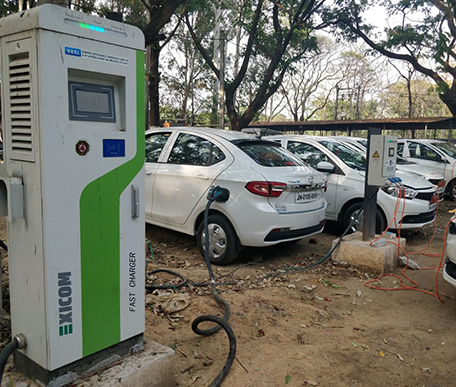Electric Mobility
It will need an ecosystem approach that is relevant to the local context, with policymakers, regulators and other stakeholders identifying the technologies and approaches that best fit the Indian scenario. Additionally, a new industrial ecosystem is currently underway – unravelling opportunities for economic resilience, resource efficiency, innovation and R&D. With the diffusion of electric vehicle technology in India, upcoming and established firms have begun launching new products, services and business models to increase their competitiveness.
Electric mobility is often considered as a mere change in fuel source within existing transportation systems. Yet, the opportunity is far greater, provided barriers to mass electric vehicle adoption (e.g. capital cost, vehicle range and access to charging infrastructure) are actively resolved. In addition, the intrinsic connections between electric transportation and the energy sector offer unique opportunities to leverage the ongoing clean energy transition in India.
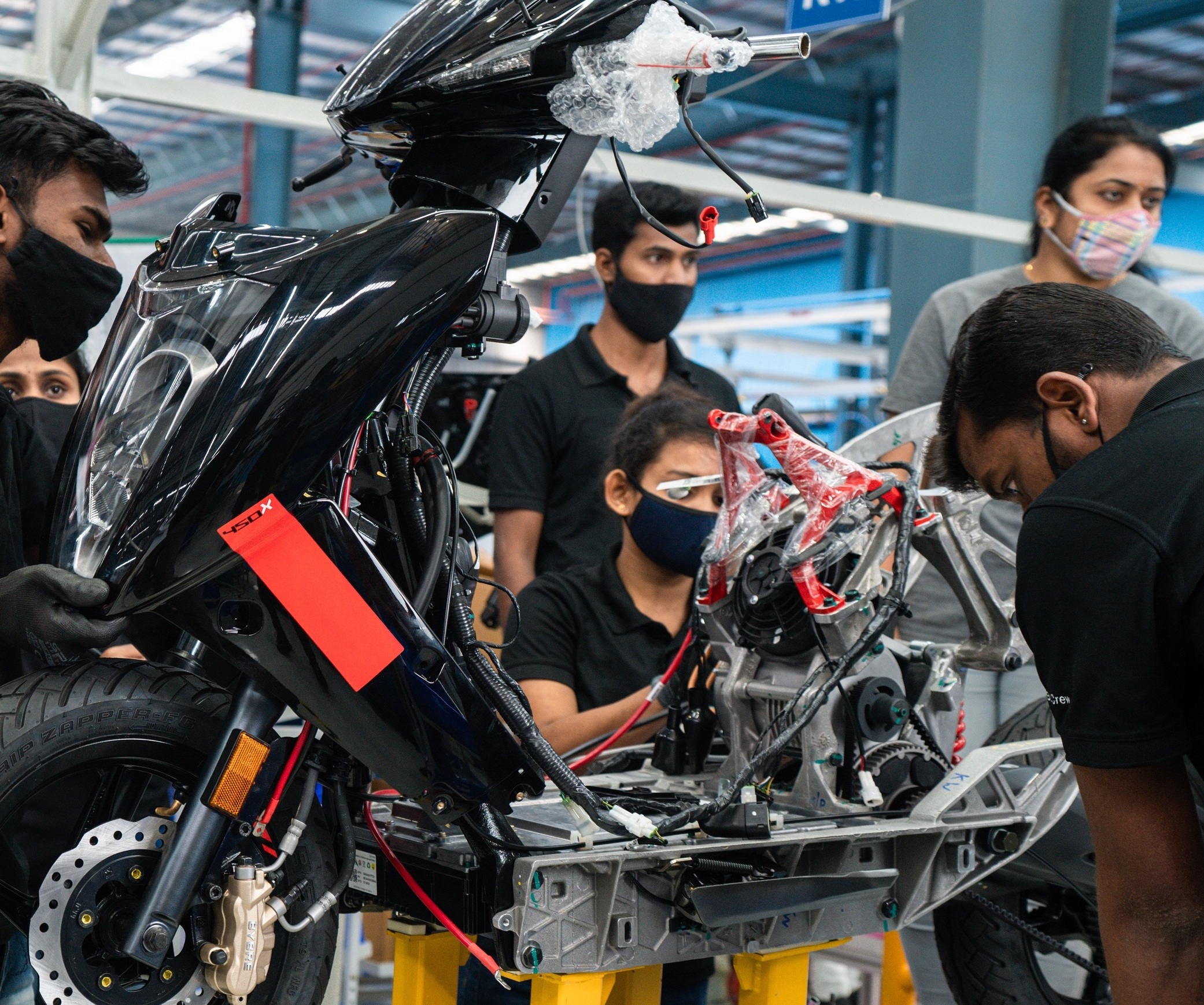
Tracking India’s industrial evolution using a four-dimensional framework of competitiveness. Photo by Ather Energy
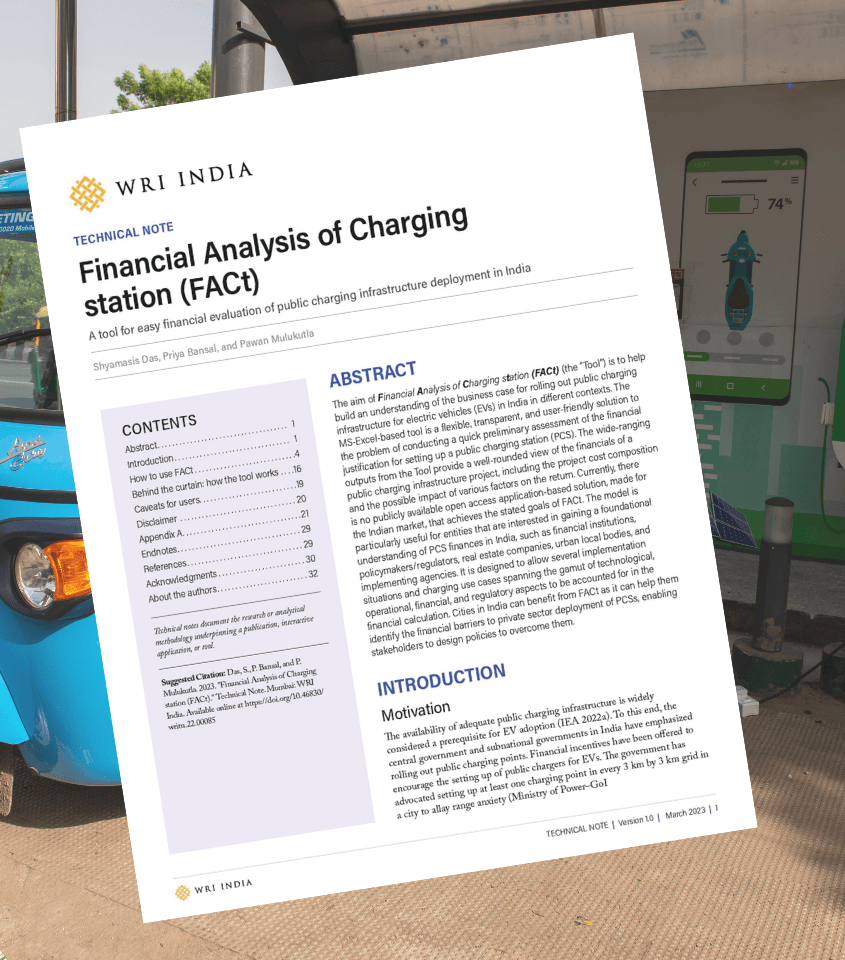
Financial Analysis of Charging station (FACt) Tool
WRI India’s Financial Analysis of Charging station (FACt) Tool aims to help build an understanding of the business case for rolling out public charging infrastructure for electric vehicles (EVs) in India in different contexts.
- The one-of-its-kind excel-based tool is a flexible, transparent, and user-friendly solution to the problem of conducting a quick preliminary assessment of the financial justification for setting up a public charging station (PCS).
- The Tool provides a well-rounded view of the financials of a public charging infrastructure project, including the project cost composition and the possible impact of various factors on the return.
- The Tool is useful for entities such as financial institutions, policymakers/regulators, real estate companies, urban local bodies, and implementing agencies.
- Currently, there is no such freely available, open-access resource available that can help decode the financial performance of an investment in PCS deployment and also yield insights into the associated financial aspects.
- The Tool is accompanied by a Technical Note that gives details about different aspects of the tool, explains the adopted methodology and the steps to follow to run the tool.
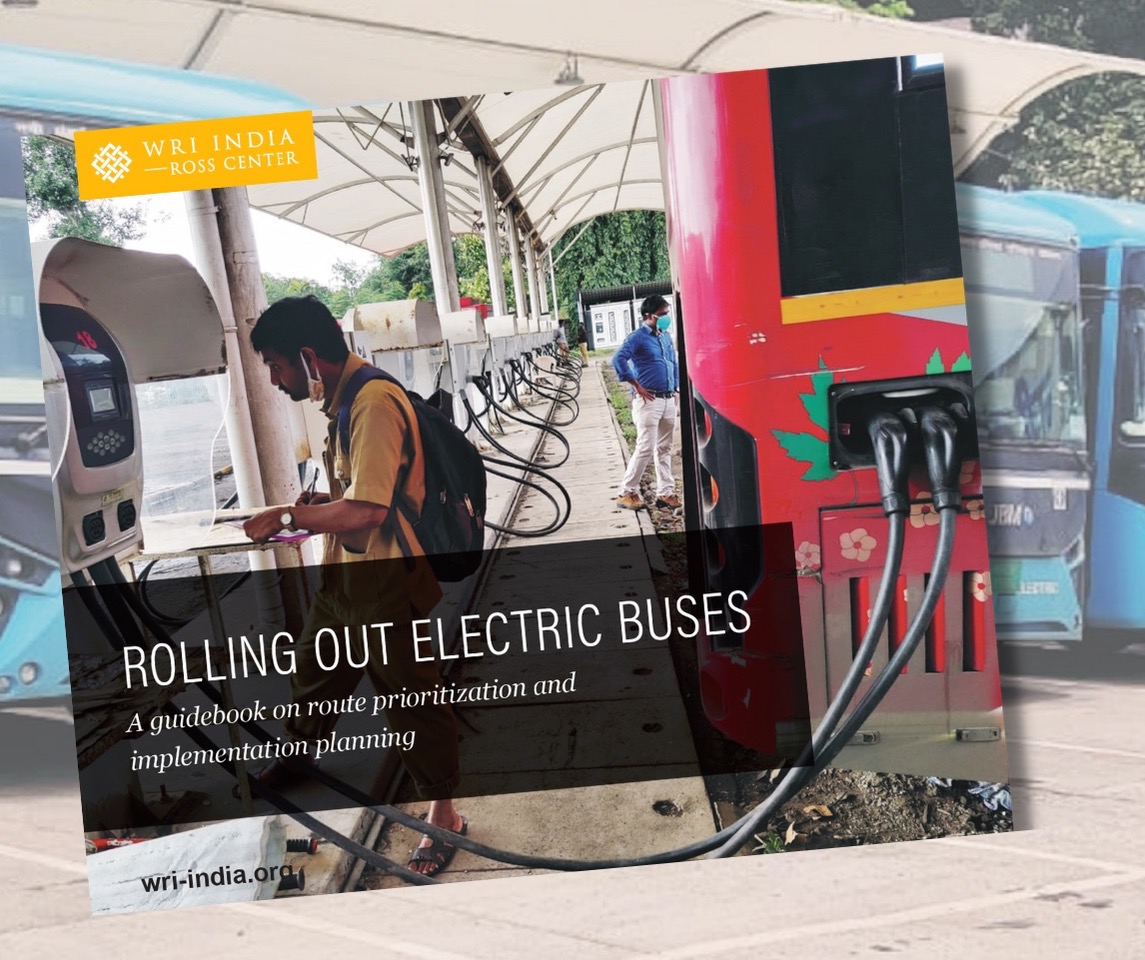
E-Bus Route Prioritization and Implementation Planning
WRI India with support from the Transformative Urban Mobility Initiative (TUMI) E-Bus Missionhas released the Guidebook Rolling Out Electric Buses to help public and private transit agencies adopt a calibrated approach to induct electric buses (e-buses) in their public bus services.
- The Guidebook serves as a ready-reckoner that sheds light on the technical and financial aspects of e-bus adoption to plan for current and future deployment.
- It suggests a six-step approach and decision tree for route prioritization and implementation planning.
- The Guidebook is also supported by an online calculator, Route EValuator, that is a first-of-its-kind Excel-based solution for transit agencies to evaluate the merit for deployment of e-buses on specific routes.
EV Auto Cluster Analysis
New electric vehicles players are not bound by existing auto clusters and are redrawing traditional boundaries by creating new corridors of growth.
- Traditional manufacturers in India have clustered in proximity to suppliers to get assured supply of sub-components, but that is slowly shifting with new EV startups concentrating on technological corridors for their development.
- Diversification in the automotive value chain will have a positive impact on its workforce, creating close to 5 crore new jobs in the EV industry by 2030.
- Competitiveness of the emerging electric mobility industry will define India's technological leadership in the coming decade.
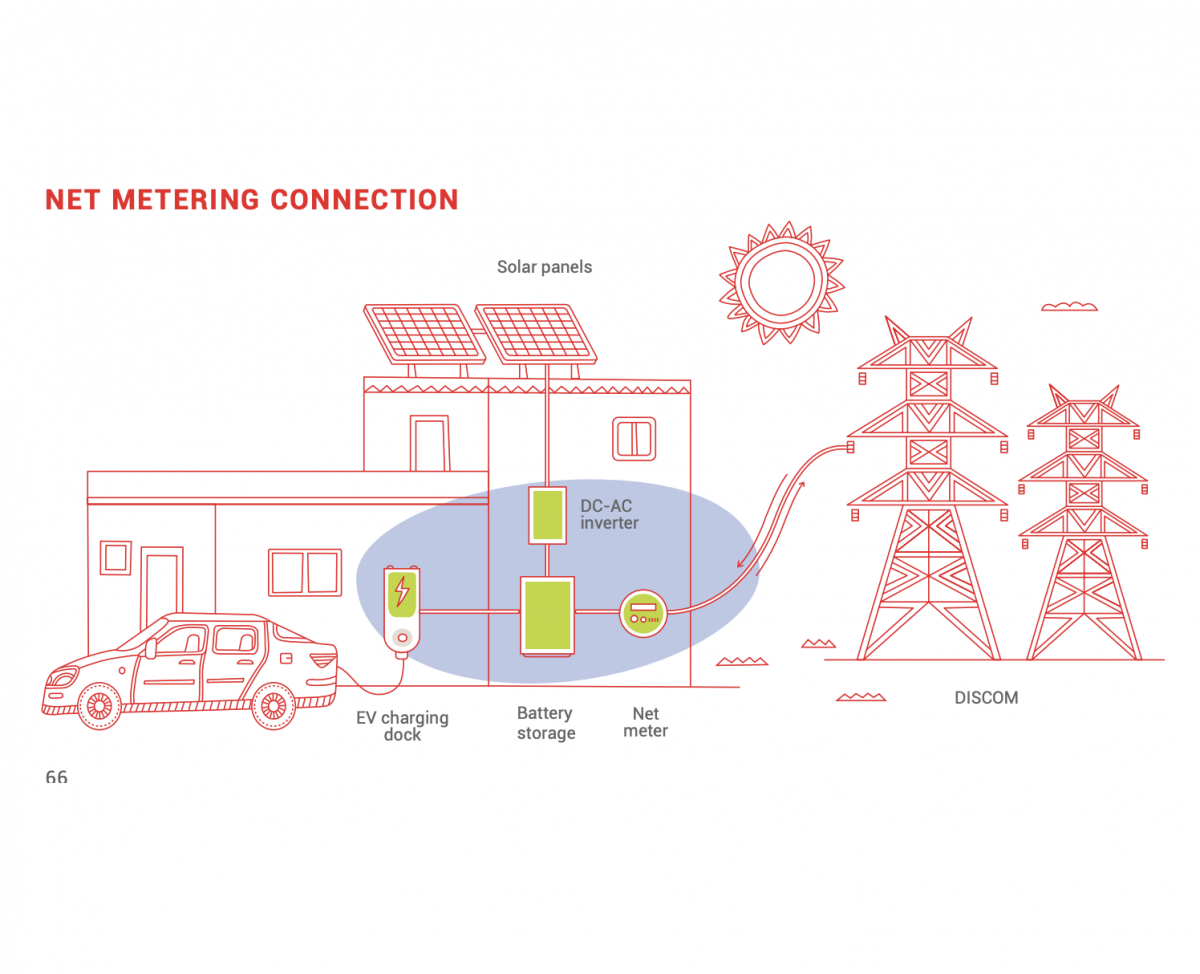
The Handbook for Electric Vehicle (EV) Charging Infrastructure Implementation
The Handbook for EV Charging Infrastructure Implementation has been has been jointly developed by NITI Aayog, Ministry of Power (MoP), Department of Science and Technology (DST), Bureau of Energy Efficiency (BEE), and World Resources Institute (WRI) India. The Handbook offers a systematic approach that guides implementing authorities and stakeholders on planning, authorization, and execution of electric vehicle charging infrastructure. Key highlights include -
- An overview of the technological and regulatory frameworks and governance structures needed to facilitate EV charging
- A step-by-step approach to rolling out an implementation roadmap
- Defining a methodology to access energy demand for public EV charging
- Smart charging to minimize adverse impacts of EV charging loads on the grid
Tracking India’s Evolving E-Mobility Startup Landscape
The electric mobility sector in India has a dynamic ecosystem, of more than 550 startups, that has raised over USD 850 million since 2012 making it the third largest e-mobility start-up market globally. We are constantly analysing the overall e-mobility startup landscape in India which includes -
- The different sub-sectors in which startups are operating
- The incorporation of e-mobility products and services by traditional automotive manufacturers
- The pursuit of transport electrification, as part of the national sustainability agenda, by policymakers
- The funding interest in the electric mobility market

A Review of State Government Policies for Electric Mobility
WRI India’s Electric Mobility Program explores EV policies proposed by different states. Most of these policies are rolled out with two broad goals: To hasten EV adoption and to increase investments in the state. We look at the entire ecosystem, from policy to implementation, by considering three broad requirements:
- Consumer demand incentives: These support the early market development of electric vehicles — either as purchase or operational incentives — with the former defraying the higher upfront costs of EVs and the latter encouraging on-road EV usage
- Charging infrastructure incentives: A robust network of EV charging infrastructure reassures consumers. State incentives include a mix of financial incentives, spatial planning, and regulatory frameworks to support the deployment and integration of EV charging.
- Industry incentives: Industry incentives are aimed at vehicle manufacturers, battery producers, and ancillary companies. Incentives are provided as capital and infrastructure subsidies, as well as human resource and research development.

SHAPING AN ENABLING ECOYSTEM FOR E-BUSES
WRI India's Electric Mobility program offers technical assistance and capacity building while facilitating conversations between public and private stakeholders to get a broader, yet nuanced, understanding of the challenges that come with the transition to electric buses. Our key areas of work in this sector are:
- Providing an understanding of the pressure points faced by public agencies in procurement through the lens of the Total Cost of Ownership EValuator to help stakeholders to anticipate and mitigate product-risk, operations-risk, revenue-risk, and technology-risk of operating electric buses.
- Evaluating different procurement models and analysing existing practices to help decision makers optimise terms to diversify risks and reduce the resource burden.
- Studying the functional divergence of ICE and electric buses and helping public bus agencies structure route planning for electric bus deployment.
- Developing frameworks to optimise battery and charging Infrastructure by assessing different electric bus technologies.
- Creating a robust comparison of cost components and earnings of electric and ICE buses to assess viability gap funding in order to sustain the shift to clean transport.
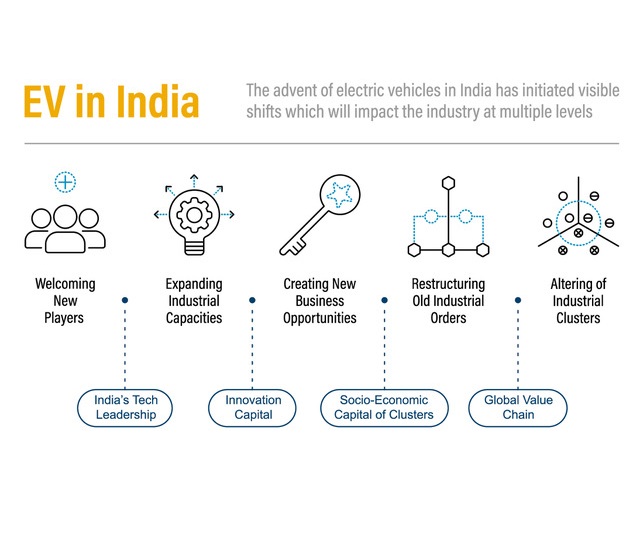
TRACKING INDIA’S EV INDUSTRIAL EVOLUTION
WRI India’s Electric Mobility Program is pursuing three lines of work that form the basis of our policy work with decision makers in state and central government, industry, and academia -
- Tracking industrial evolution through a ‘Competitiveness’ framework: In particular how they are expanding and diversifying to gain a competitive advantage.
- Helping create a robust and resilient EV value chain: Our market sizing exercise estimates the potential growth across various upstream and downstream segments in the EV ecosystem - i.e value chain, charging infrastructure and batteries.
- Fostering an appropriately-skilled and inclusive ‘Human Capital’: We are studying new employment opportunities as well as jobs that are becoming obsolete to enable states to create a viable talent pool and ensure a just transition in the labor market.
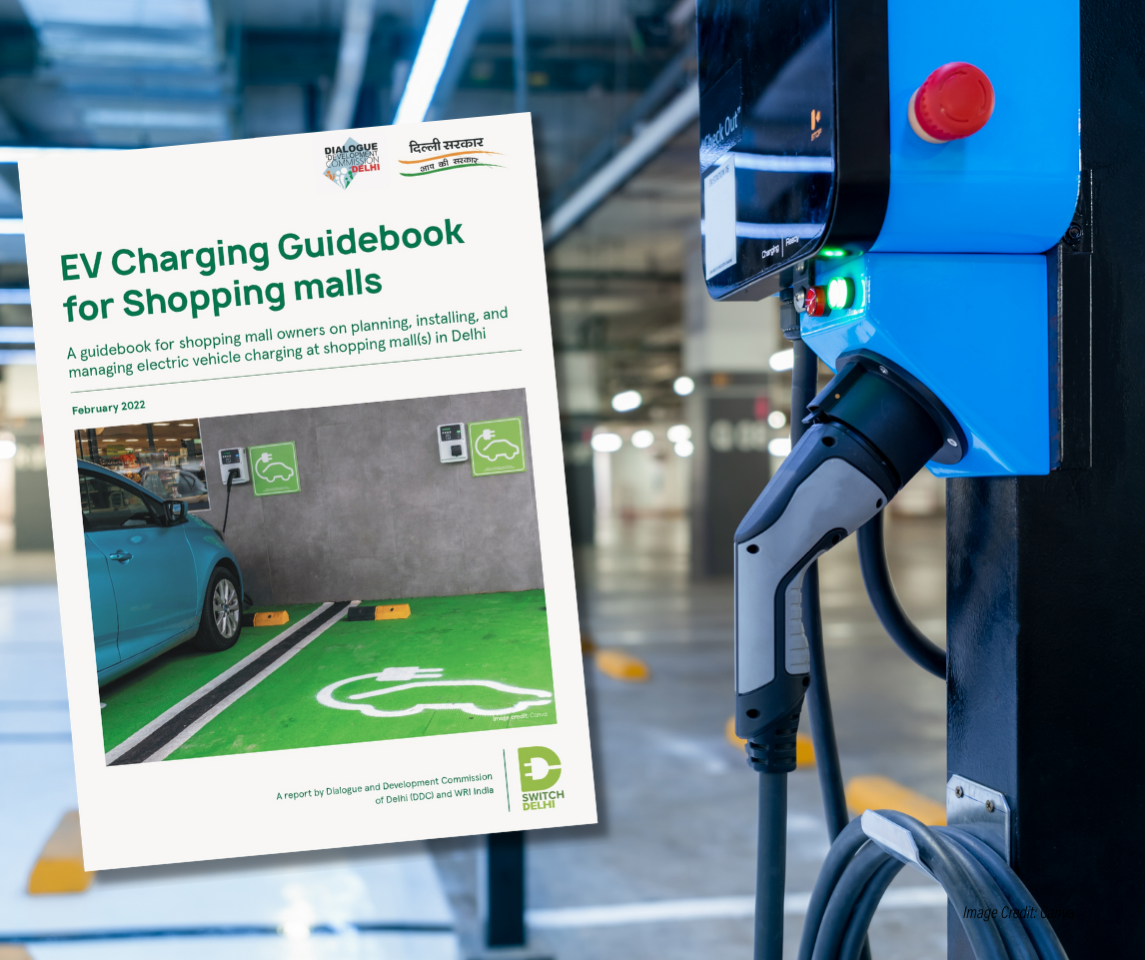
EV Charging Guidebooks for Delhi
WRI India in conjunction with the Dialogue and Development Commission of Delhi (DDC-D) has released EV charging guidebooks for corporates, shopping malls and residential societies to accelerate the adoption of electric vehicles in Delhi.
The three guidebooks are:
- Corporate EV charging Guidebook for planning and implementation of EV charging stations at workplaces.
- EV Charging Guidebook for Shopping Malls to develop the way forward for implementation of charging stations in the parking areas of the malls.
- Residential EV Charging Guidebook to facilitate and simplify EV adoption process for residential societies and address some of the common concerns (such as lack of space, capital investment, power load management etc.) of RWAs.
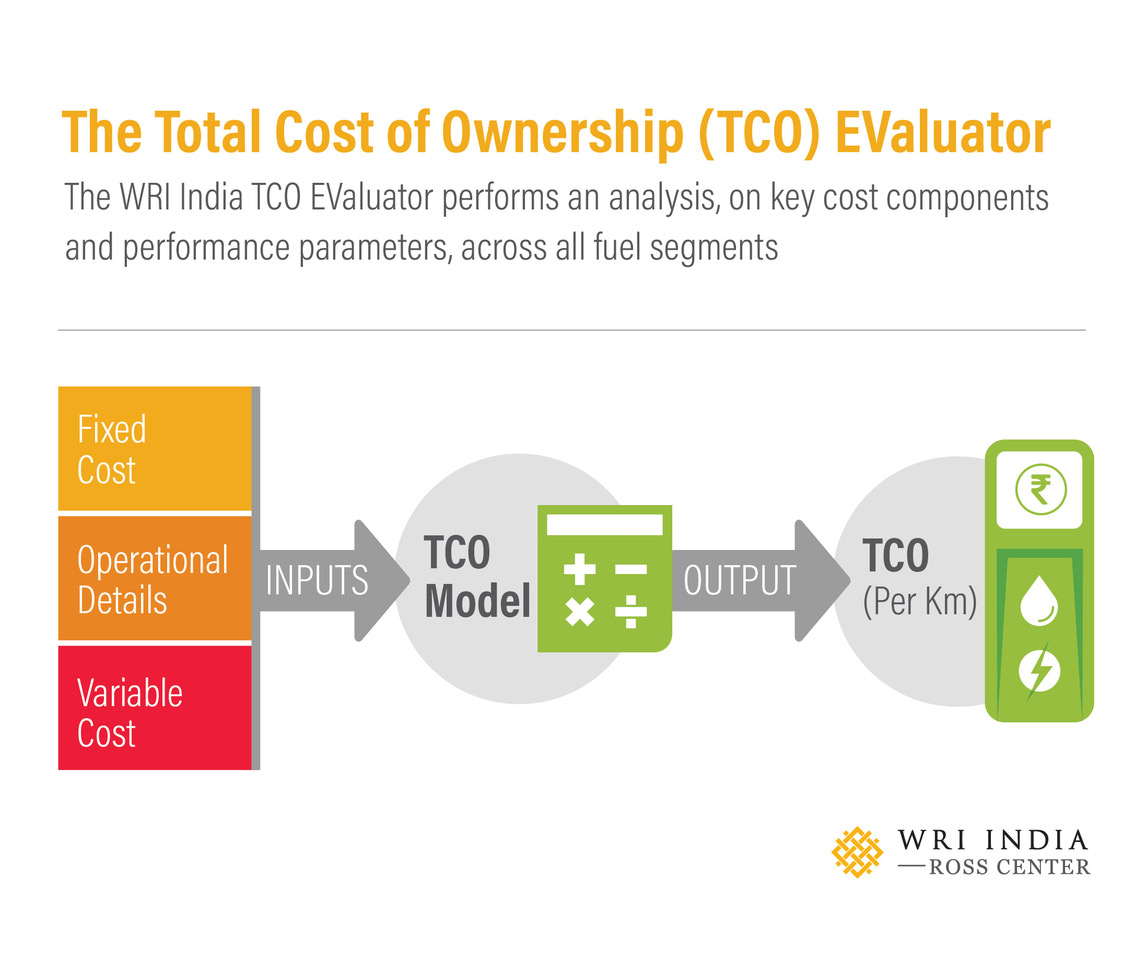
TOTAL COST OF OWNERSHIP EVALUATOR
Access our TCO EValuator that allows you to compare and contrast the Total Cost of Ownership (TCO) of electric two-wheelers, three-wheelers, cars and buses, as well as light commercial freight vehicles (LCFV), medium commercial freight vehicles (MCFV) and heavy commercial freight vehicles (HCFV) against their internal combustion engine (ICE) counterparts.
- The TCO EValuator takes into account the various cost components and usage details of a vehicle during the period of utilization and provides you with a TCO/ km for acquiring and using the vehicle.
- You can input capital and operations costs in the sheet (in various currencies and measurement systems) to determine the effect of various components on the TCO of a vehicle.

